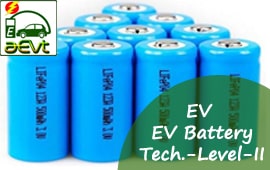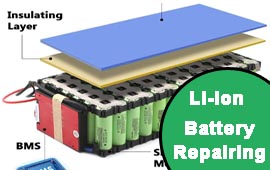MW Solar Power Plant Consultancy
PR Newswire: A 1 MW solar power plant typically requires around 4 to 5 acres of land, if installed on a rooftop, would typically require around 100,000 square feet of area. A 1 MW solar plant in India typically requires 4-5 acres of land and can generate around 1.4 million units of electricity annually. A 5 MW solar plant can generate around 6,000 MWh annually and generate estimated revenue of Rs. 1.5 - 1.75 crore per year. The payback period for a solar power plant can range from 3.2 years for equity to 11.89 years for total project investment.

A 1 MW solar power plant, if installed on a rooftop, would typically require around 100,000 square feet of area, around 4 to 5 acres of land. A 1 kW solar system needs a space of 100 sq feet for installation. Hence, a 1 MW solar power plant will require (100 x 1000) = 1,00,000 square feet of area for installation. However, this is a rough estimate and actual land requirements can vary based on factors like panel efficiency, tilt angle, and layout. Ground-mounted systems are more common for 1 MW plants due to the vast space required. A 1 MW solar power plant is a medium-sized setting of solar power, which large businesses, big industrial shops, and government projects use to generate a substantial amount of energy.

A 1 MW solar power plant consultancy involves services related to the design, engineering, procurement, and installation of a 1 MW solar power plant. It includes site selection, energy yield estimation, technology assessment, and financial modeling to evaluate project risks and return on investment.
Key Services Provided by MW Solar Power Plant Consultants:
-
Feasibility Studies:Consultants assess the viability of a solar power project based on location, solar resource availability, land availability, and energy demand. They also conduct thorough site assessments, including terrain analysis, shading analysis, solar irradiance, and environmental factors.
-
Site Selection and Screening:Identifying suitable locations for the plant, considering factors like land availability, access to grid, and solar radiation.
-
Energy Yield Estimation:Assessing the potential energy production of the plant based on solar resource data, panel type, and tilt angle.
-
Technology Assessment:Evaluating different solar panel technologies and their suitability for the specific location.
-
Grid Connection Assessment:Determining the feasibility of connecting the plant to the grid, including required infrastructure and regulations.
-
Financial Modeling:Analyzing the project's costs, revenues, and financial performance, including payback period and return on investment.
-
Project Risk Analysis:Identifying potential risks associated with the project and developing mitigation strategies.
-
Regulatory Compliance:Ensuring compliance with local and national regulations related to solar power generation.
-
Cost Analysis:Estimating the total cost of the solar power plant, including installation, equipment, and operation and maintenance expenses.
-
Incentives and Tax Credits:Identifying and evaluating available incentives and tax credits for solar power projects.
-
Projected Energy Savings:Calculating the projected energy savings from the solar power plant and its impact on electricity costs.
-
Return on Investment:Assessing the project's profitability and payback period.
-
Environmental Impact Assessment:Evaluating the potential environmental impact of the solar plant, such as land use, water usage, and air quality.
-
Regulatory Compliance:Ensuring that the project complies with all relevant regulations and permits.
-
Auxiliary Loads:Considering the energy consumption of the plant's auxiliary systems, such as lighting, maintenance, and control rooms.
-
PVsyst software involves simulating the plant's performance, including energy generation, losses, and performance ratio, to optimize its design and operation.
-
1. Plant Design and Simulation:PVsyst software is used to model the solar plant, including the photovoltaic (PV) modules, inverters, and other components. The simulation takes into account the plant's location, solar irradiance data, and other relevant factors.
-
2. Performance Analysis:The simulation provides insights into the plant's energy generation, energy losses, and performance ratio. These parameters help assess the plant's efficiency and overall performance.
-
3. Optimization:By analyzing the simulation results, the plant's design and operation can be optimized to maximize energy production and reduce losses. This can involve adjusting panel orientation, tilt angles, or other parameters.
Breakdown of Costs
- Solar Panels: These account for around 50-55% of the total cost. For a 1 MW plant, it works out to be approximately INR 2.5 crores or more, depending upon the panel quality and efficiency.
- Inverter Cost:The inverter system generally accounts for 10-15% of the total cost. It can vary from INR 50 lakhs to INR 70 lakhs.
- Mounting Structures and Wiring: The cost for mounting structures and wiring is approximately 15-20% of the total investment.
- Labor and Installation: Labor and installation costs vary depending on the location and complexity of the project, but this typically accounts for 10-15% of the overall cost.
- Additional Costs: If you opt for advanced features like battery storage or tracking systems, this can add 10-15% to the total cost.
Income From 1MW Solar Power Plant
Many factors affect the income from your 1MW solar power plant. These include annual power consumption, the daily energy output of your solar panels, and the purchase policies and prices offered by the government.
Particulars
Description
Average Daily energy output
4000 kWh
Annual energy output
4000×365=14,60,000 units
Govt. pays per unit
3.85 ₹/unit
Total income over the year
₹56,21,000
Net income over the year
₹43,51,000 (Total income – Annual Maintenance Cost)
Training Providers and Resources:
-
Offers online courses and certifications in solar power project development.
-
American Solar Energy Society:Provides training on using System Advisor Model (SAM) for solar water heating systems.
Consultants:
-
SR Technologiest:Offers consultancy for solar power project development.
Conclusion
A 1 MW solar power plant is a capacious medium for meeting large-scale power requirements. Opting for the installation of such a solar power plant would be a wise step for you. The 1MW solar power plant demonstrates strong potential to generate both profits and success.The implementation and operation of 1MW solar power plants becomes more efficient through the expert support.
RE News: Renewable energy Latest News & Resources - including solar, wind, hydropower, biofuels and others new and appropriate energy generation technology.



















